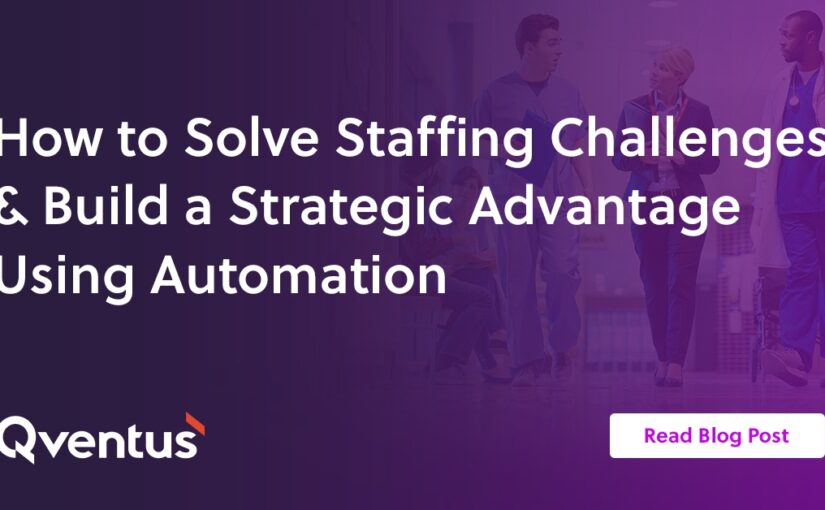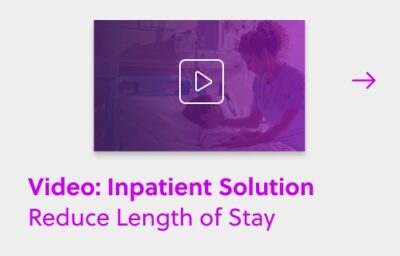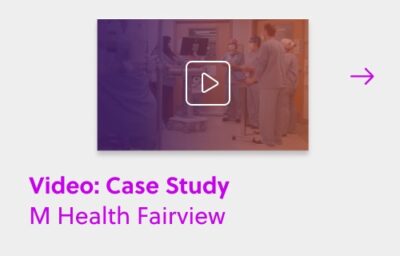
To address staffing challenges, many hospitals have relied on unsustainable stopgap measures. Now, leading health systems are taking a new approach by automating their care operations, which creates immediate value and a lasting strategic advantage. Automation enables you to: 1) Reduce workload intensity to improve staff satisfaction, 2) Hardwire processes to reduce variability from staff turnover, and 3) Create more inpatient bed and OR capacity using existing staff and resources. As a result, organizations have mitigated rising clinical labor costs while simultaneously generating enormous value for patients and frontline teams.
A Modern Approach to Staffing Challenges
As we emerge from the Covid-19 pandemic, healthcare leaders are now grappling with unprecedented staffing challenges. One key challenge is high staff turnover, which has increased in key departments by up to 45% over the past two years, according to a recent analysis by Premier Inc. What’s more, many experienced workers are leaving or retiring early, forcing hospitals to fill vacancies with less experienced hires.
As a result, clinical labor costs are skyrocketing as hospitals spend more to retain existing staff, hire agency workers, and even augment inpatient care teams with remote staff — significantly increasing costs per discharge and eroding operating margins.
A key underlying cause of these challenges is rampant frontline care team burnout, which intensified during the pandemic. In fact, according to a 2021 Kaiser Family Foundation/ Washington Post survey, today over half of healthcare workers report burnout.
To address these issues, many hospitals have relied on stopgap measures, such as increasing compensation or benefits. While these tactics may provide limited, short-term relief, they fail to address root causes and do not fundamentally improve the clinical work environment.
Now, leading health systems are taking a new approach — using AI-powered software to automate their care operations, which reduces manual burden on staff and creates enormous value for the organization. Here are three winning strategies to solve workforce challenges with automation:
1) Reduce workload intensity to improve staff satisfaction
Today, highly skilled healthcare professionals spend a significant amount of time on low value tasks that pull them away from direct patient care. For example, care teams manually coordinate hundreds of steps to discharge a patient through back-and-forth phone calls and texts. Additionally, they rely on intuition and manual data analysis to make key decisions, which creates a high cognitive load.
Automation reduces workload intensity by eliminating manual steps and using AI to guide decisions. For example, by automating discharge planning processes, inpatient care teams can more efficiently conduct multidisciplinary rounds (MDRs) and manage care coordination steps for safe, on time discharges. AI learns hospital operational patterns and analyzes real-time EHR data to predict key information early in the patient stay, such as estimated discharge dates, dispositions, and barriers to discharge. Then, process automation resolves discharge barriers by autopopulating key information, eliminating manual care coordination with ancillary teams.
As another example, automating OR scheduling processes reduces the number of phone calls between OR and surgeon schedulers by up to 40%. The resulting operational efficiencies and process transparency also delight surgeons and OR teams, which improves job satisfaction and increases surgeon retention.
By decreasing manual tasks and reducing cognitive burden, automation enables healthcare professionals to practice at the top of their license. This enhances the clinical work environment for staff, which can drive loyalty and decrease turnover.
2) Hardwire processes to reduce variability from staff turnover
With greater turnover than ever before, hospitals can no longer rely on the best managers and teams to maintain processes that drive consistent, high-quality care. In fact, many healthcare organizations are struggling to recover efficiency metrics that slipped during the pandemic, such as excess days and length of stay.
By automating operations and reinforcing best practice processes with technology, hospitals can increase consistency in care regardless of care team turnover. For example, AI-powered software standardizes discussions during multidisciplinary rounds (MDRs), so hospitals are less reliant on individual case managers to run effective MDRs. Additionally, by hardwiring proven discharge planning best practices — including early discharge plans and proactive barrier resolution — hospitals build process resiliency and can reduce excess days by 30-50%.
In perioperative settings, OR scheduling is typically a complex, highly-variable process that relies on manual coordination and frequently results in unused OR time. By hardwiring scheduling processes with automation, healthcare organizations can maintain high OR utilization regardless of hospital or surgeon office staffing.
3) Create more inpatient bed and OR capacity using existing staff and resources
Finally, automation creates efficiency improvements that unlock significant new capacity to care for patients — using existing staff and resources.
By automating discharge planning processes, hospitals reduce length of stay, and this frees up effective bed capacity to accept new patients. With decreased manual workload, staff have more time to work on value-added tasks, so hospitals can accommodate those patients without increasing staffing levels. The impact is massive: for example, a reduction of 5,000 excess days annually creates staff capacity that is the equivalent of adding 20 nursing FTEs.
Automation also unlocks a massive amount of new capacity in perioperative settings. By optimizing OR schedules, hospitals can maximize high-value surgical cases even when they have fewer available staffed ORs. As an example, the flagship hospital at Saint Luke’s Health System increased surgical cases by 7% despite having 20% fewer staffed ORs due to staffing shortages.
Immediate Value & Sustained Advantage
Automating care operations helps health systems solve immediate staffing challenges and unlock efficiencies that give them an advantage in the market. By reducing manual workload and using AI to guide decisions, automation improves the clinical work environment, driving staff satisfaction and loyalty. By hardwiring processes, automation reduces variability, enabling health systems to consistently deliver high quality care. And by increasing utilization of resources, health systems can accommodate more patients, improving the bottom line.
While many health systems continue to rely on temporary fixes, organizations that accelerate their use of automation to run world-class operations will increasingly gain an edge in the market.
To learn how you can automate care operations with Qventus, watch the Inpatient Solution Overview Video or Perioperative Solution Overview Video. For a real-world case study on transforming operations systemwide, view the M Health Fairview Case Study Video.


